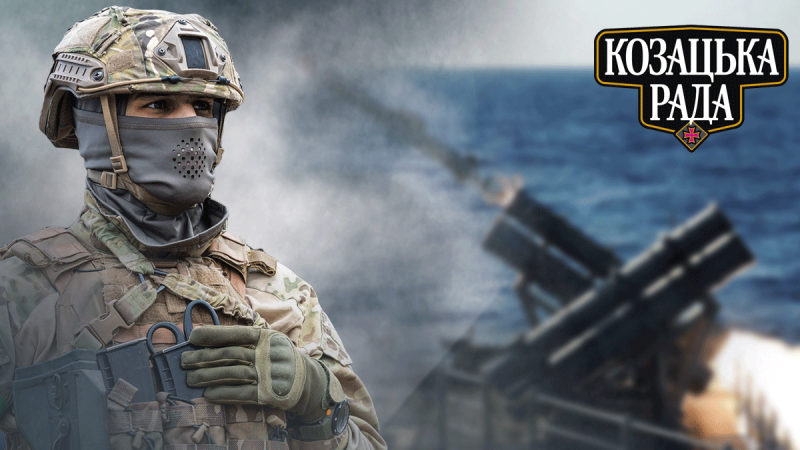
< p _ngcontent-sc90="" class="news-annotation">Every day, the Armed Forces of Ukraine defend the unoccupied part of the Black Sea coast from the Russian fleet. And anti-ship systems help them in this.
As part of the special project “Weapons of Victory”, Channel 24 and the courageous brand Kozatska Rada tell what they are capable of military equipment, which is already skillfully used by the Armed Forces of Ukraine.
In addition, the Kozatska Rada gives everyone the opportunity to join the joint struggle. The brand has launched a charity initiative “Donate for the win!”, therefore, until the end of 2022, part of the proceeds from the sale of drinks will be transferred to the “Come back alive” fund.
Products participating in the charity program are marked with a sticker . Ukrainians just need to enter the code from the excise stamp on the website, and the system will automatically contribute 10 hryvnias to the total amount of savings for a common goal – approaching victory.
And how the American “Harpoons” are already helping the Armed Forces of Ukraine in this – we will tell in the material.
The history of the creation of the “Harpoon” and its use in Ukraine
The Harpoon is an anti-ship cruise missile that was started by McDonnell Douglas and is being developed by Boeing Corporation.
Worked on it for a long time. The first developments started in 1968. However, the rocket was adopted by the United States only 9 years later – in 1977. And even this testing and modernization did not end there. American engineers managed to finally improve the rocket only in 1998.
The first development of the Harpoon rocket started in 1968/Photo DOD
Harpoon missiles have different modifications:
- AGM-84 – air-launched missile;
- RGM-84 – ship-based or shore-based complex (land launchers);
- UGM-84 – target missile for launch from underwater vehicles.
So far, there is no technical possibility in Ukraine to carry out launches either from ships or from aircraft. Therefore, the United States, together with its allies, developed coastal-based options for the Armed Forces of Ukraine. The principle of operation is similar to that of the Neptune – a mobile platform is installed that allows you to move the launcher along the coastline.
The launch itself is quite expensive, because only one rocket costs from a million dollars. Although, when compared with the price of the boats themselves, this is quite an acceptable cost. For example, Russian patrol warships cost 10-15 million dollars, and the Moskva missile cruiser was generally estimated at 750 million dollars.
Performance characteristics and possible launch options
A standard Harpoon anti-ship missile weighs about 550 kilograms. However, depending on its type and modification, this figure can reach 700 tons. The weight of the warhead is 200 kilograms. This is enough to sink even large landing ships.
The length (also depending on the modification) can reach 4.5 meters. That is, it is a rocket the size of a Land Rover. But the launch range is variable: 140 – 315 kilometers. At the same time, its speed reaches 850 km/h. Thanks to this, the missile is practically invisible to hostile air defense systems.
Depending on the target, there are 2 launch methods:
-
First and most common, when the operator knows the exact coordinates of the target.In this case, the rocket is guaranteed to hit the craft. To avoid detection by hostile air defense systems, the Harpoon flies at a low altitude – up to 4 meters above the water surface. By the way, the Ukrainian Neptunes work on a similar principle.
-
Second this option allows the operator to launch a missile in the direction of enemy ships, i.e. the exact coordinates of the target are unknown.In this case, the “Harpoon” itself will look for its “victim”, therefore, the chances of being noticed by air defense increase. This is explained by the fact that the rocket rises up and from a distance of 10 – 40 kilometers (depending on the size of the target) will find the target. It is at this moment that the enemy's air defense can work and prevent the strike.
Interestingly, the technological capabilities of this missile allow the operator to program it to search for specific enemy watercraft. Consequently, the “Harpoon” itself will look for the target it needs, and even among the cluster of ships it will try to hit the one that the operator has determined.
Operation Praying Mantis ” – the most successful use of the Harpoon
The largest and most famous use of the Harpoon anti-ship missiles was the naval battle between the United States and Iran in April 1988. The military operation was named “Mantis”.
Then “Harpoons” were used by both countries. However, the Americans still won. They were able to sink an Iranian frigate, knock out another one. A missile boat and 3 high-speed boats were also completely destroyed.
After that large-scale confrontation, the Harpoon anti-ship missiles gained their fame. Today they are in service with 32 countries, including Ukraine.
How “Harpoons” help to resist the enemy: watch the video
Of course, such anti-ship missiles pose a danger to the Russian fleet. This super-powerful weapon protects the Ukrainian coast and keeps the Black Sea Fleet from hundreds of kilometers away. And as soon as the enemy decides to approach, it will repeat the fate of the Moskva cruiser with lightning speed.
Fight together with the Armed Forces of Ukraine each on your own front and feel the taste of victory with ТМ Kozatska Rada . Together with the Come Back Alive charity foundation, the brand is doing everything to bring this triumphant day closer. Cossack Rada – the spirit of victory will appear in everyone!

